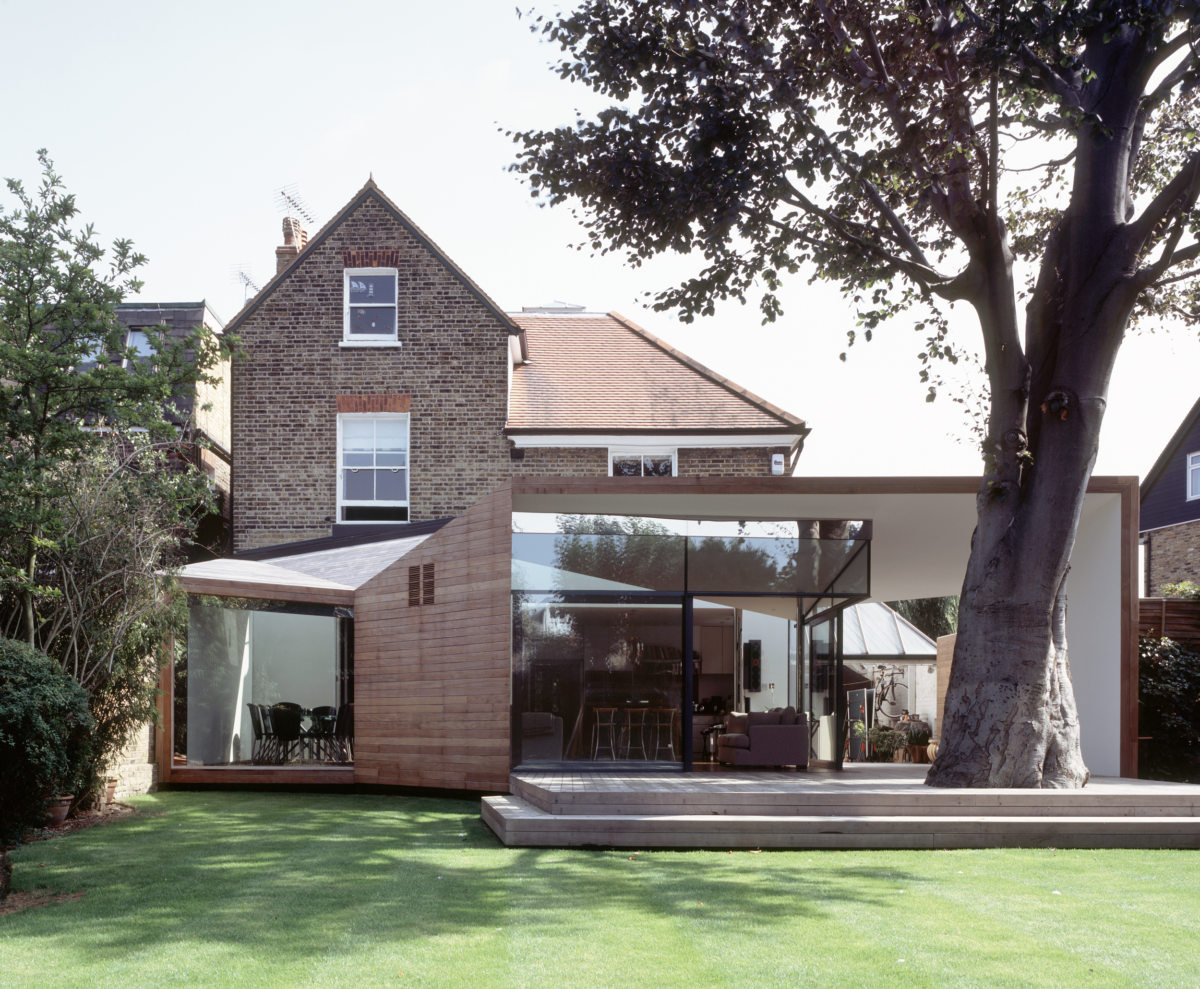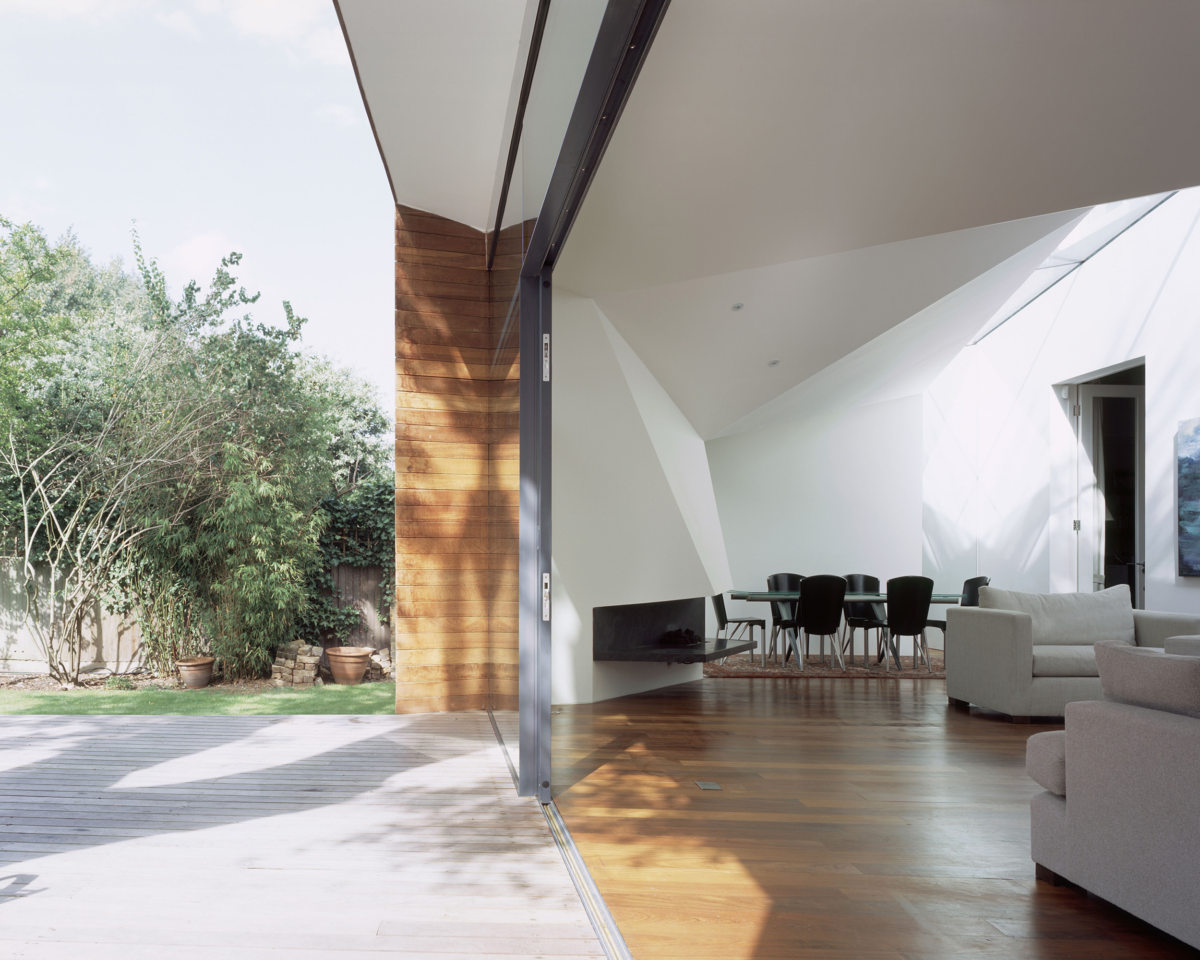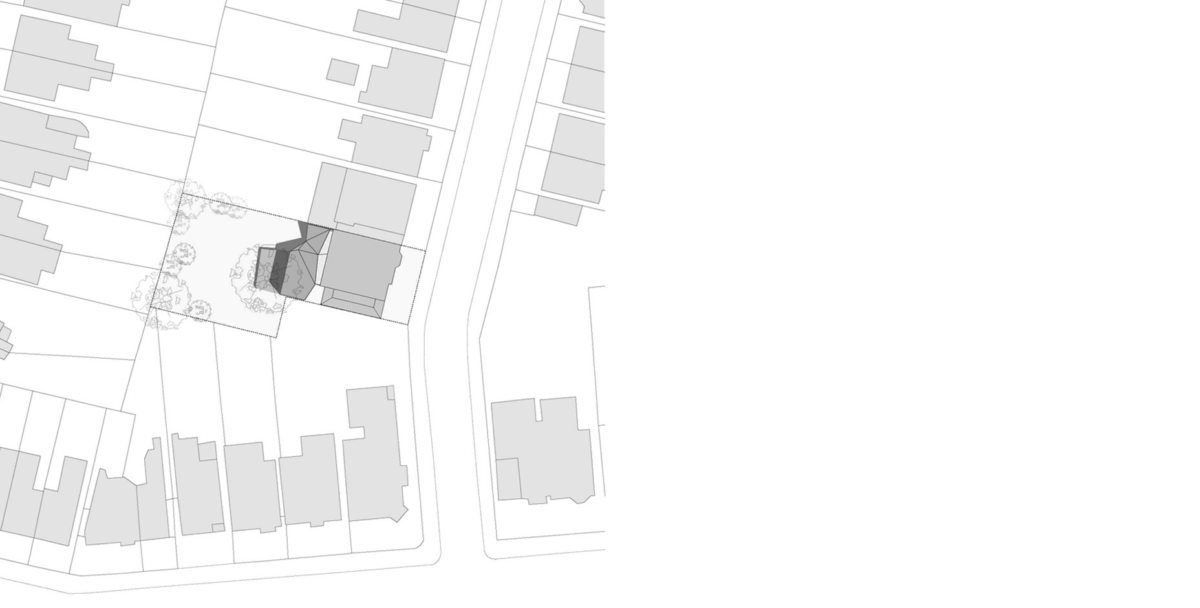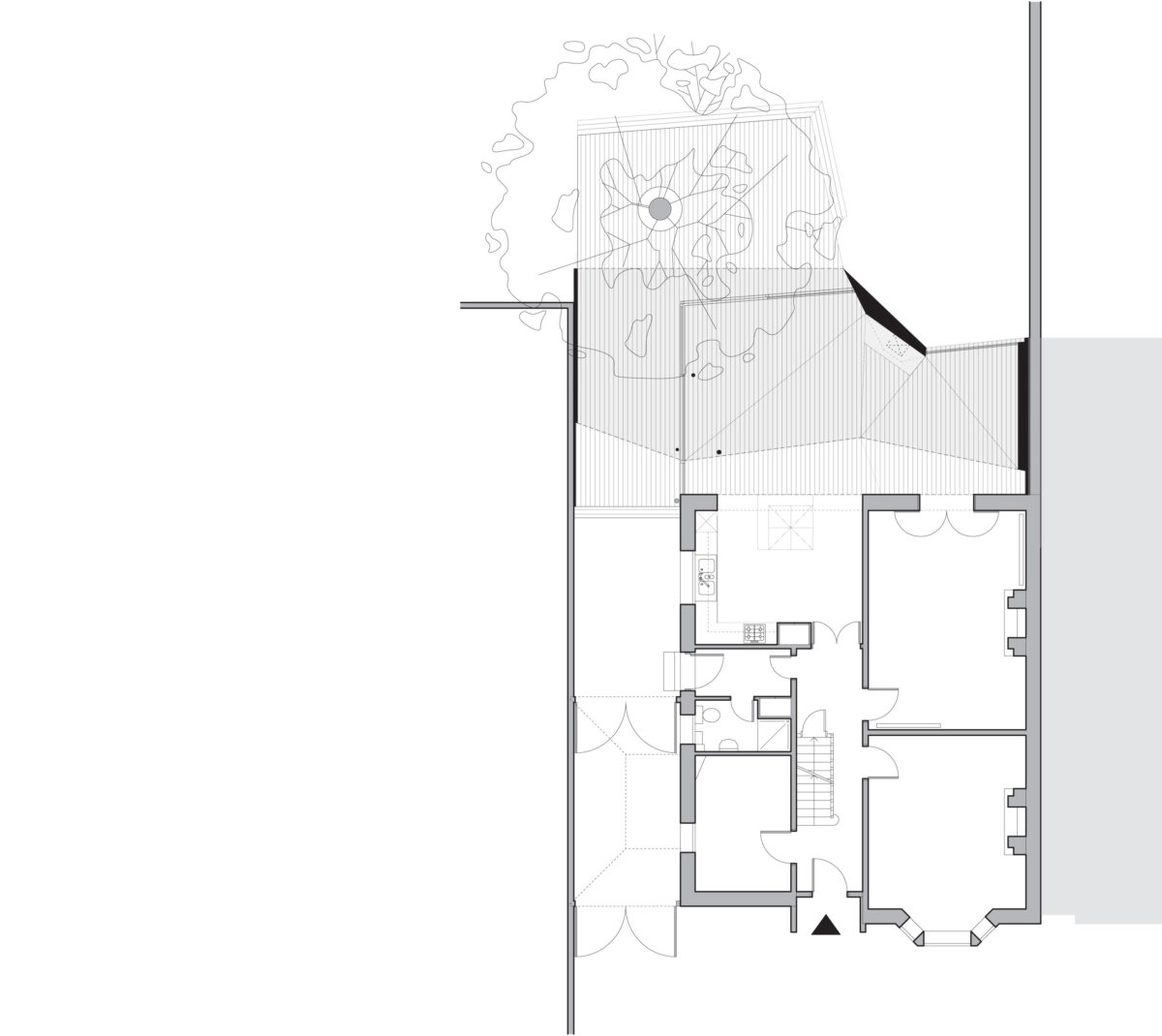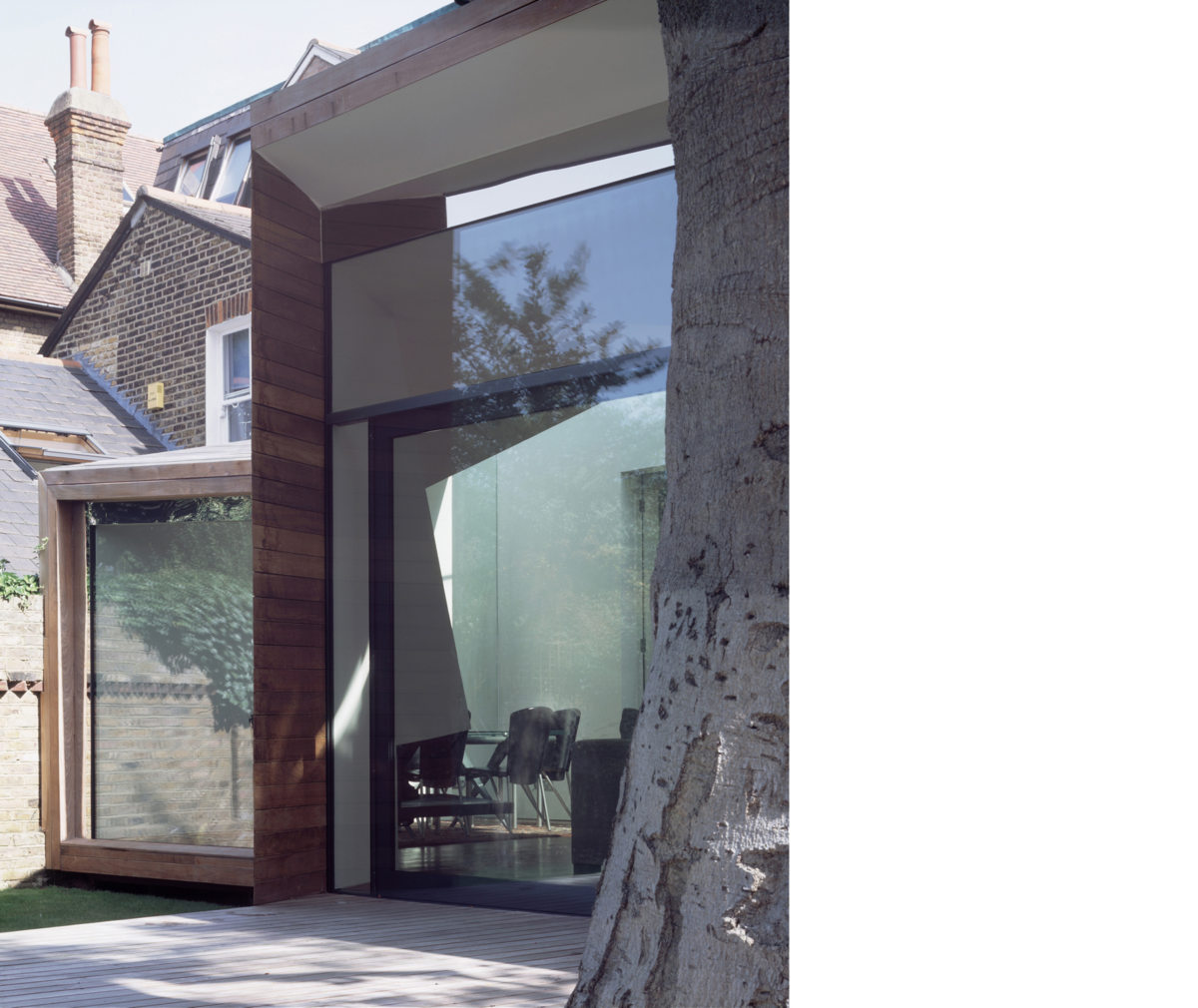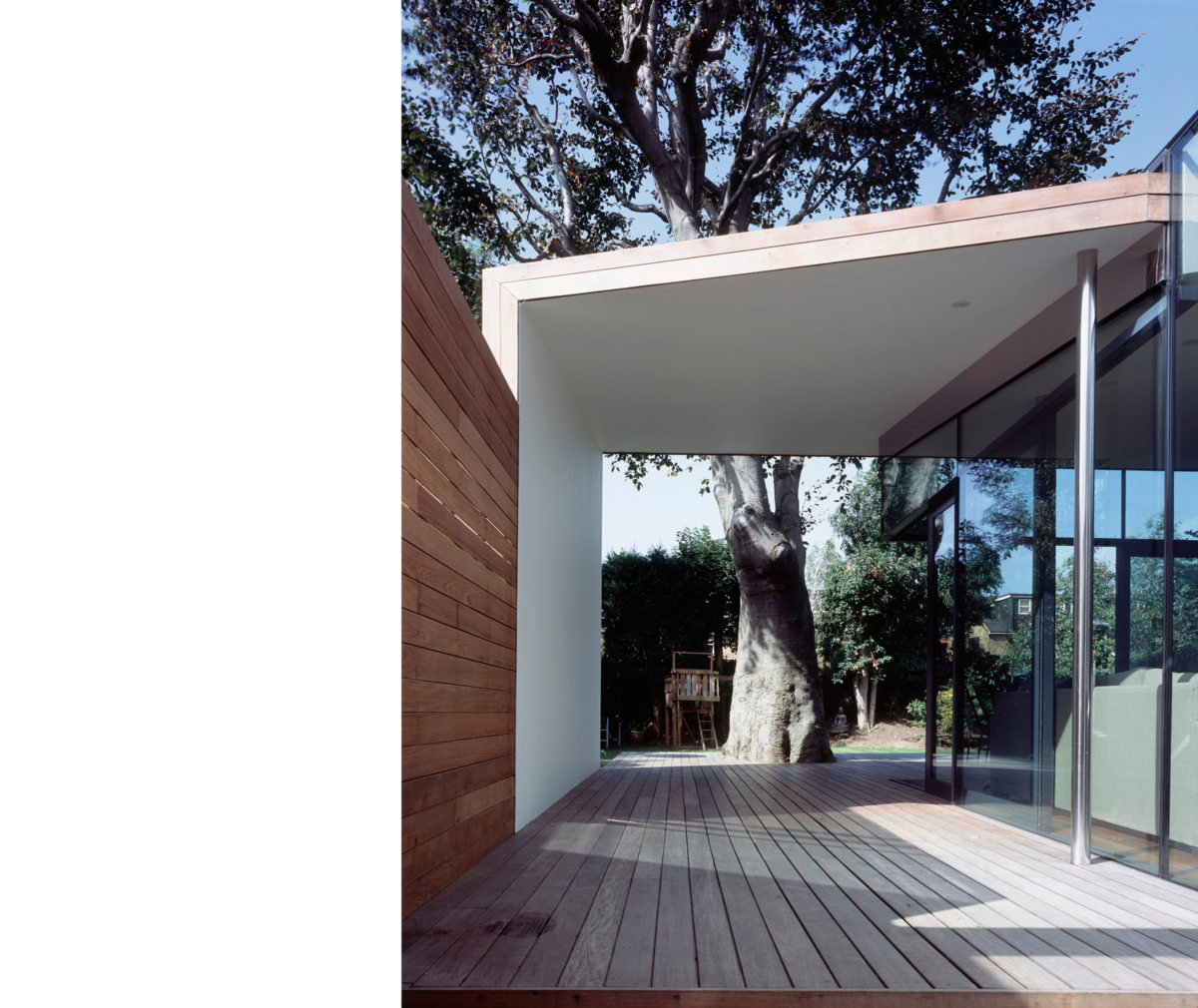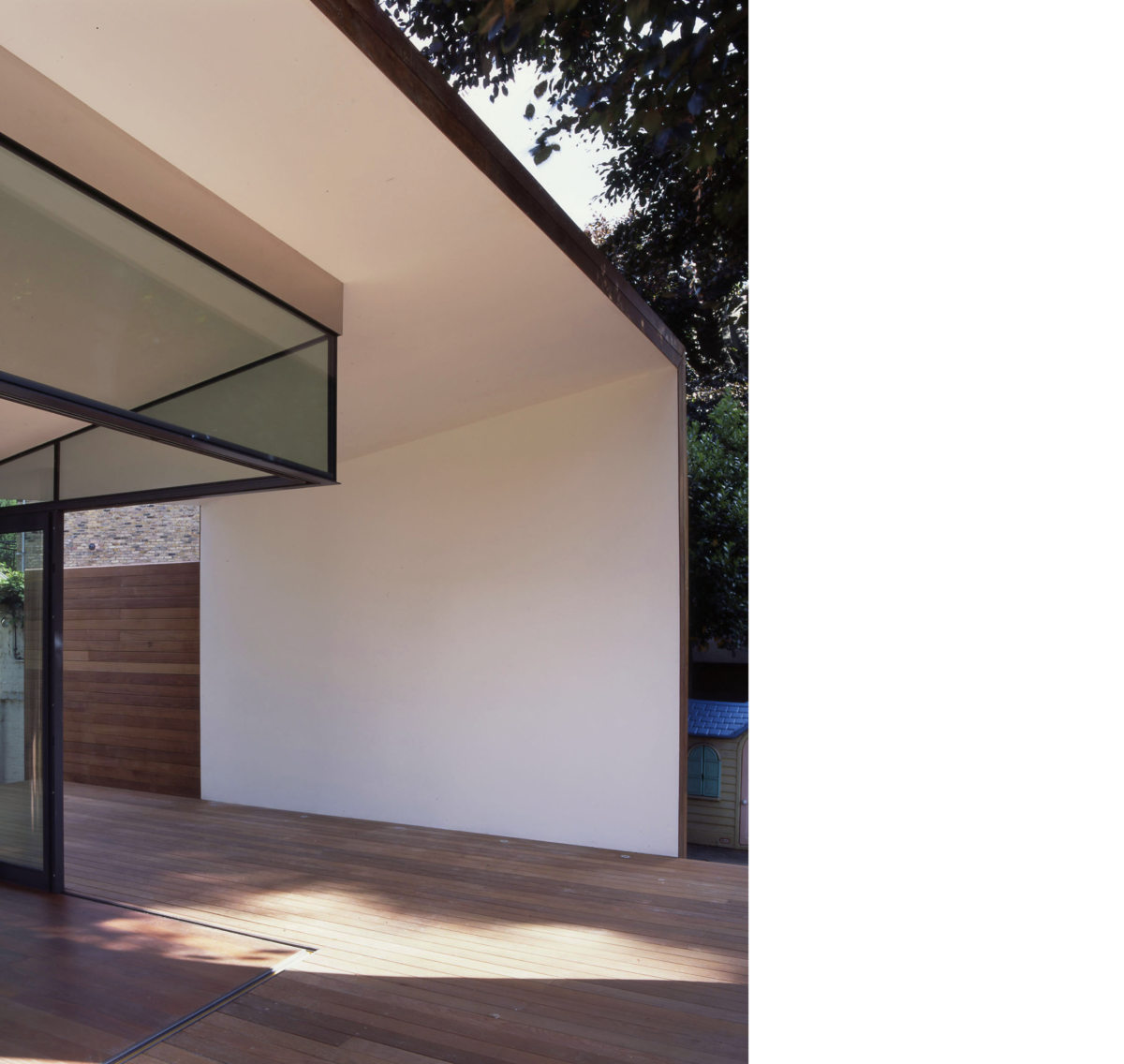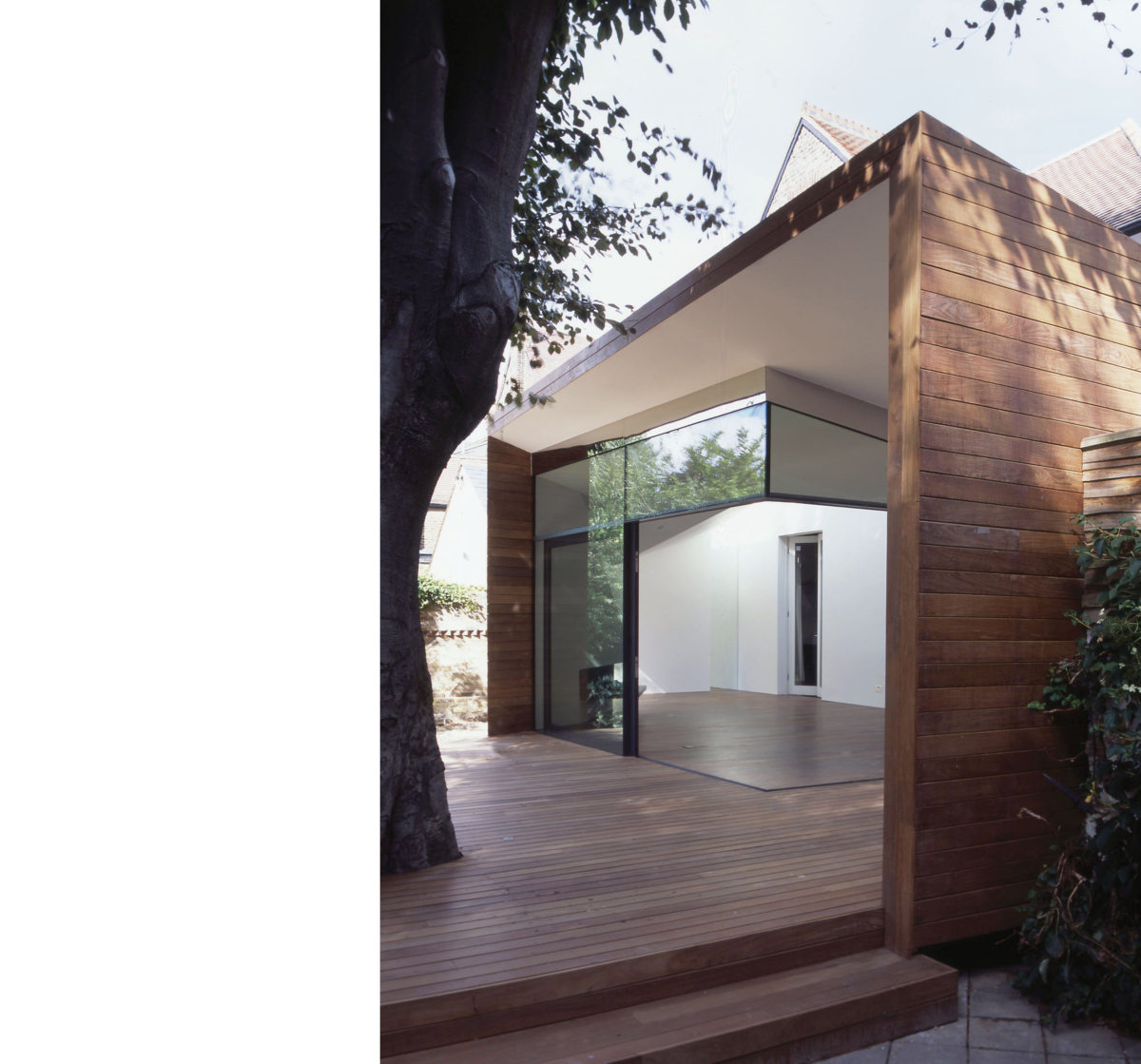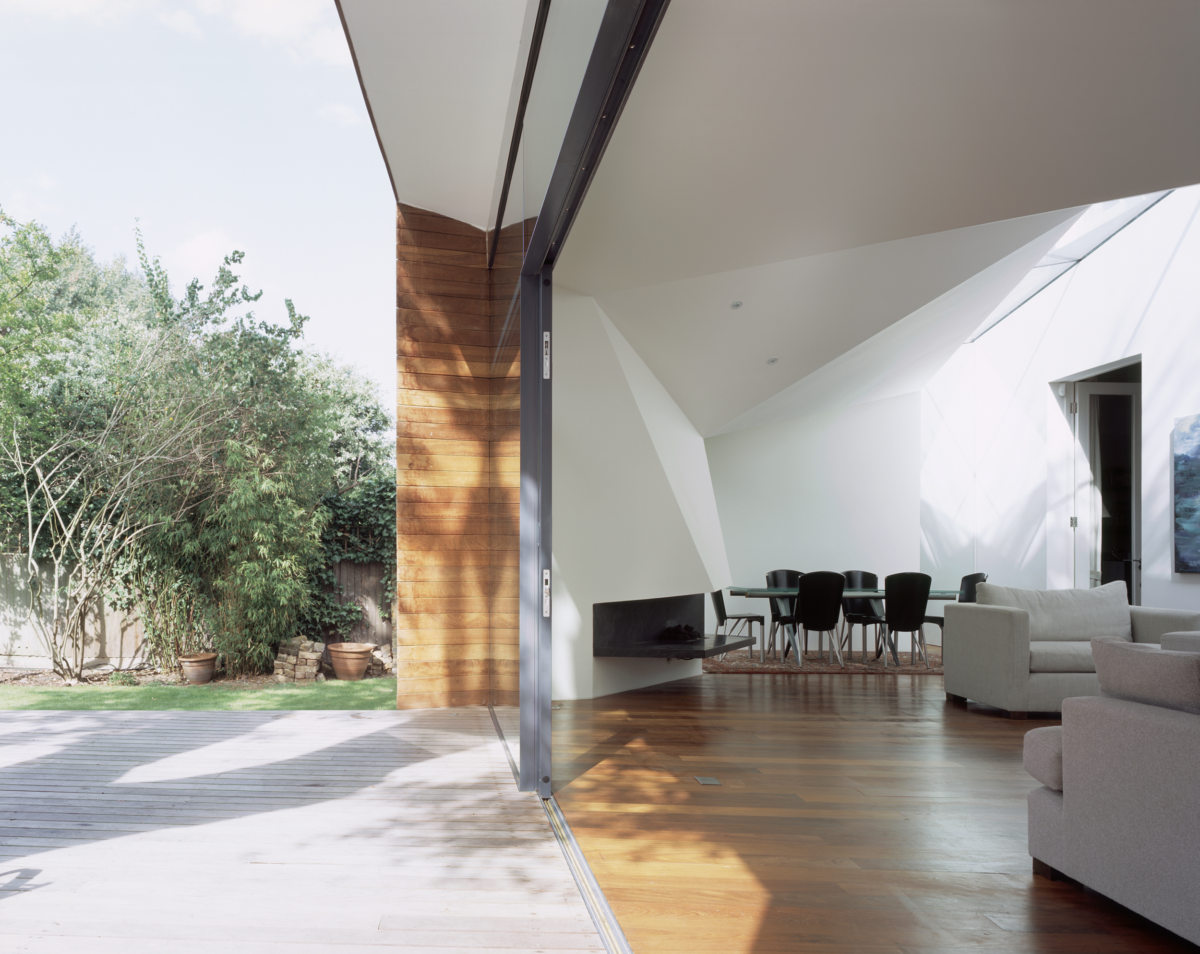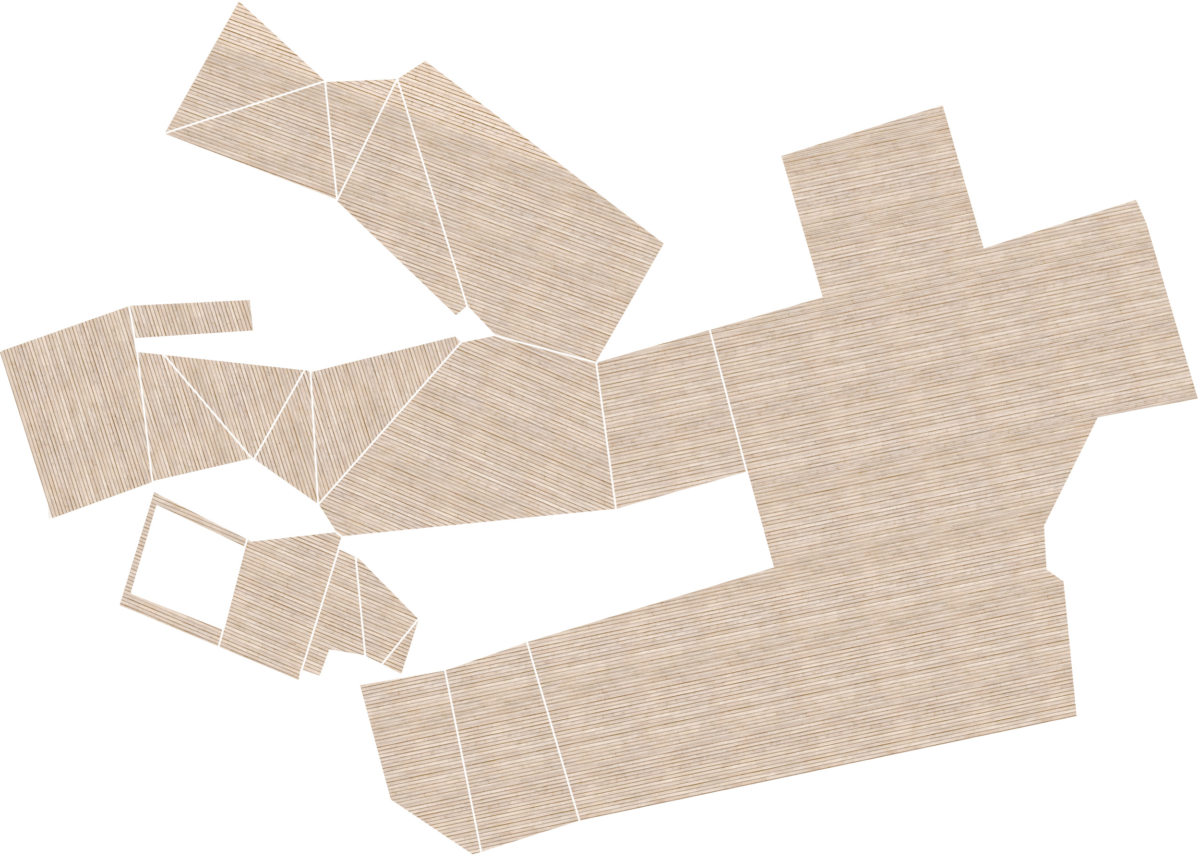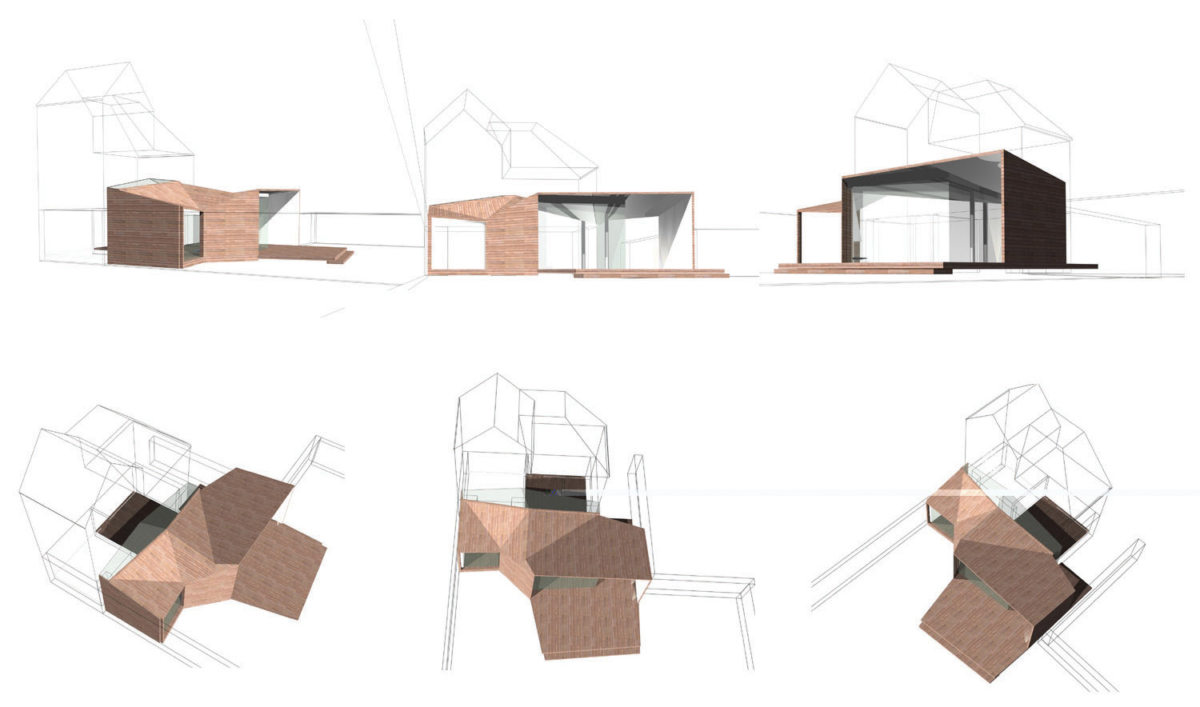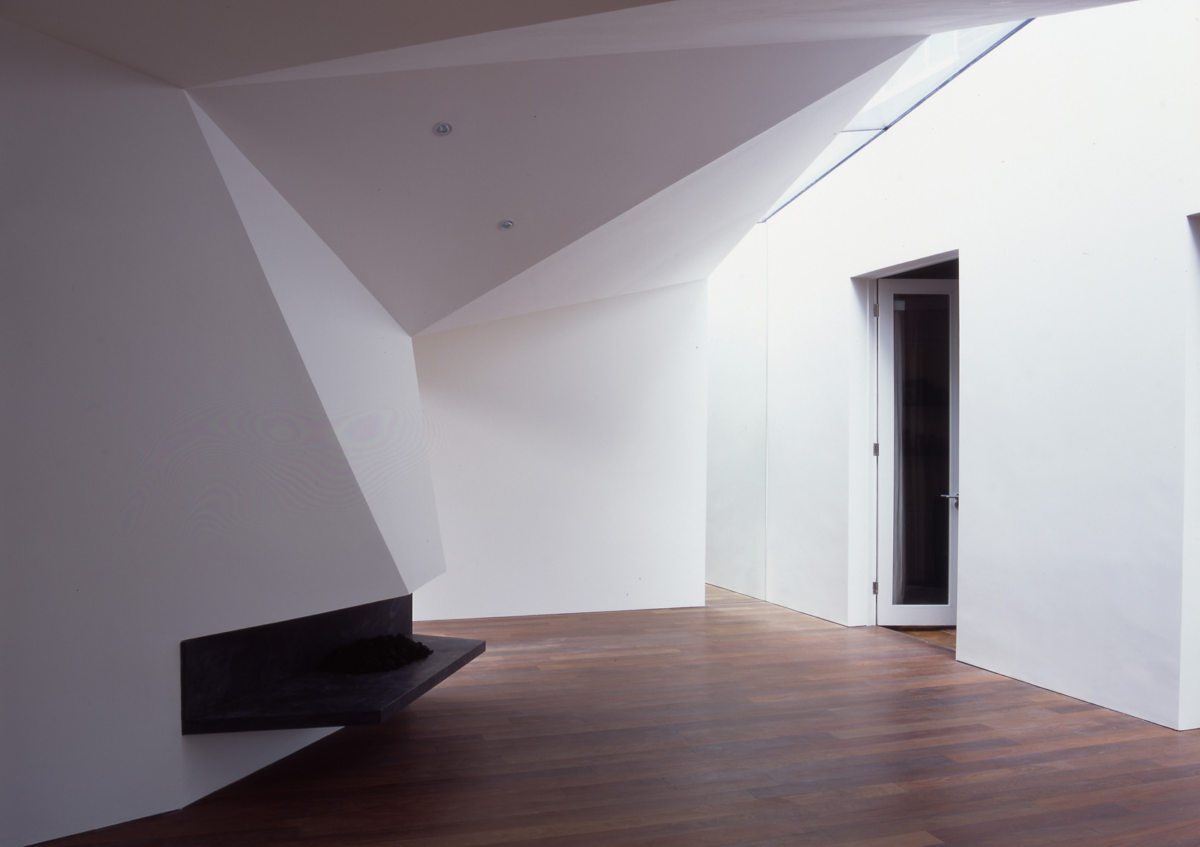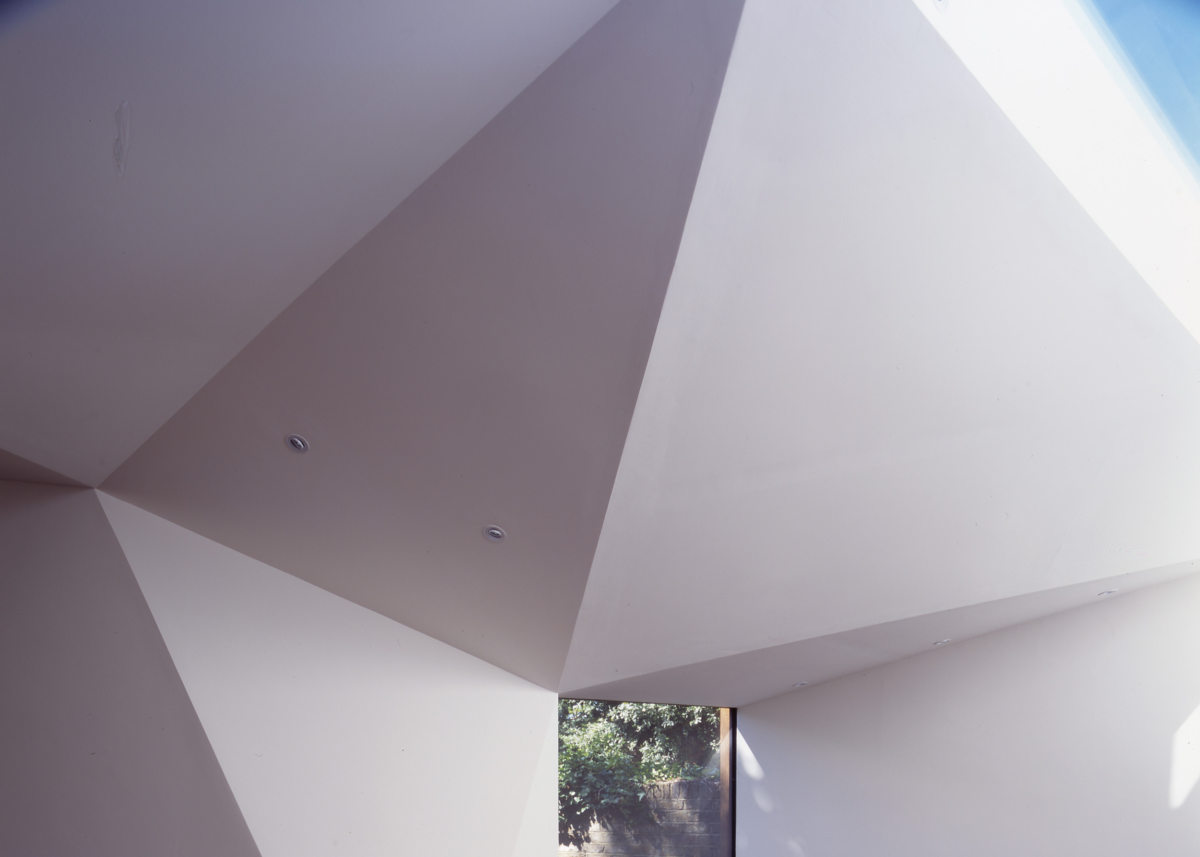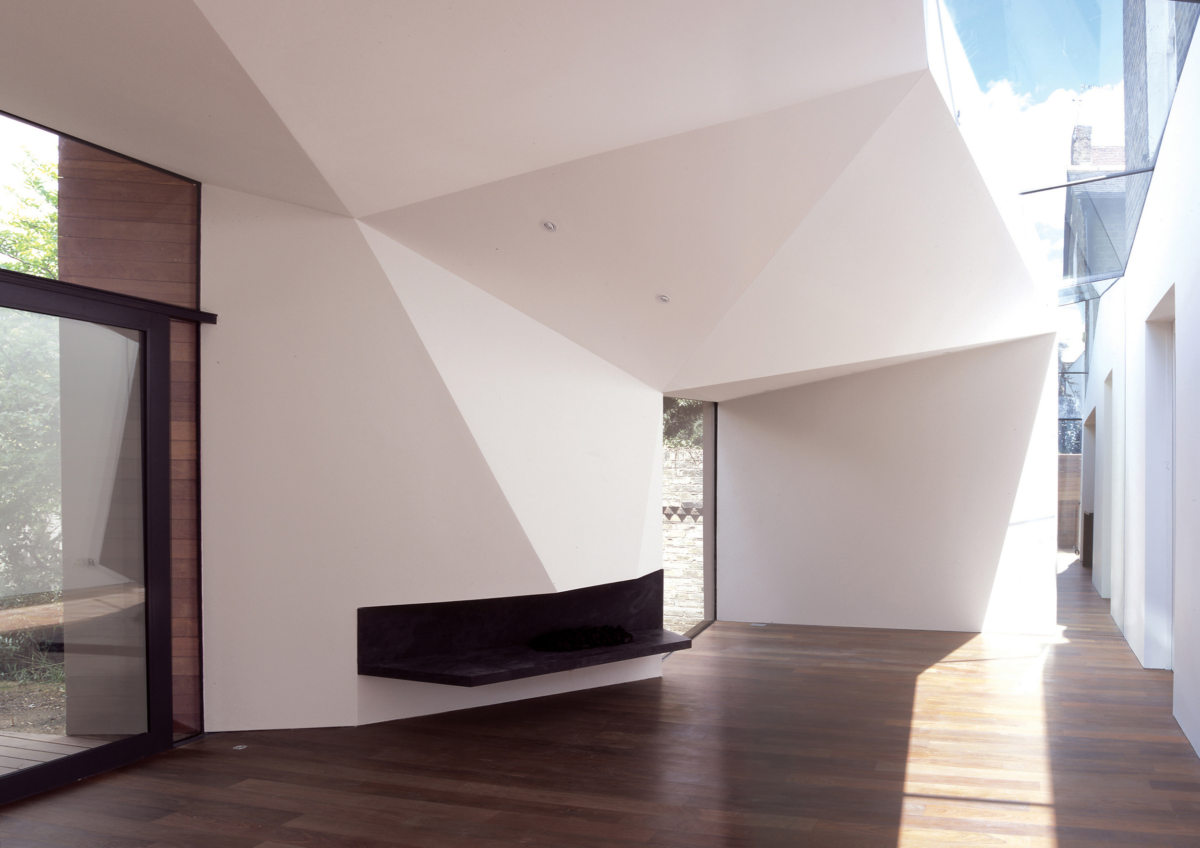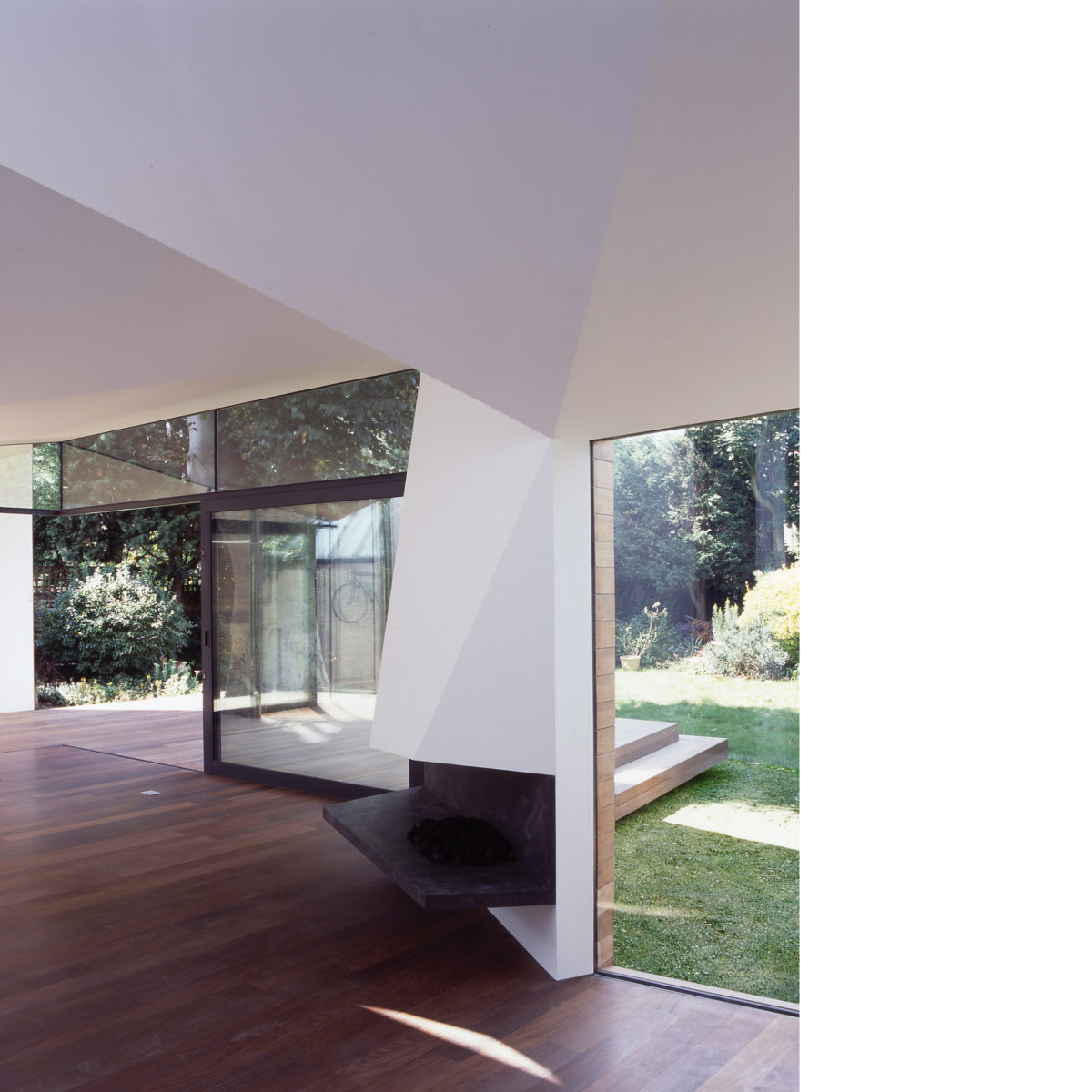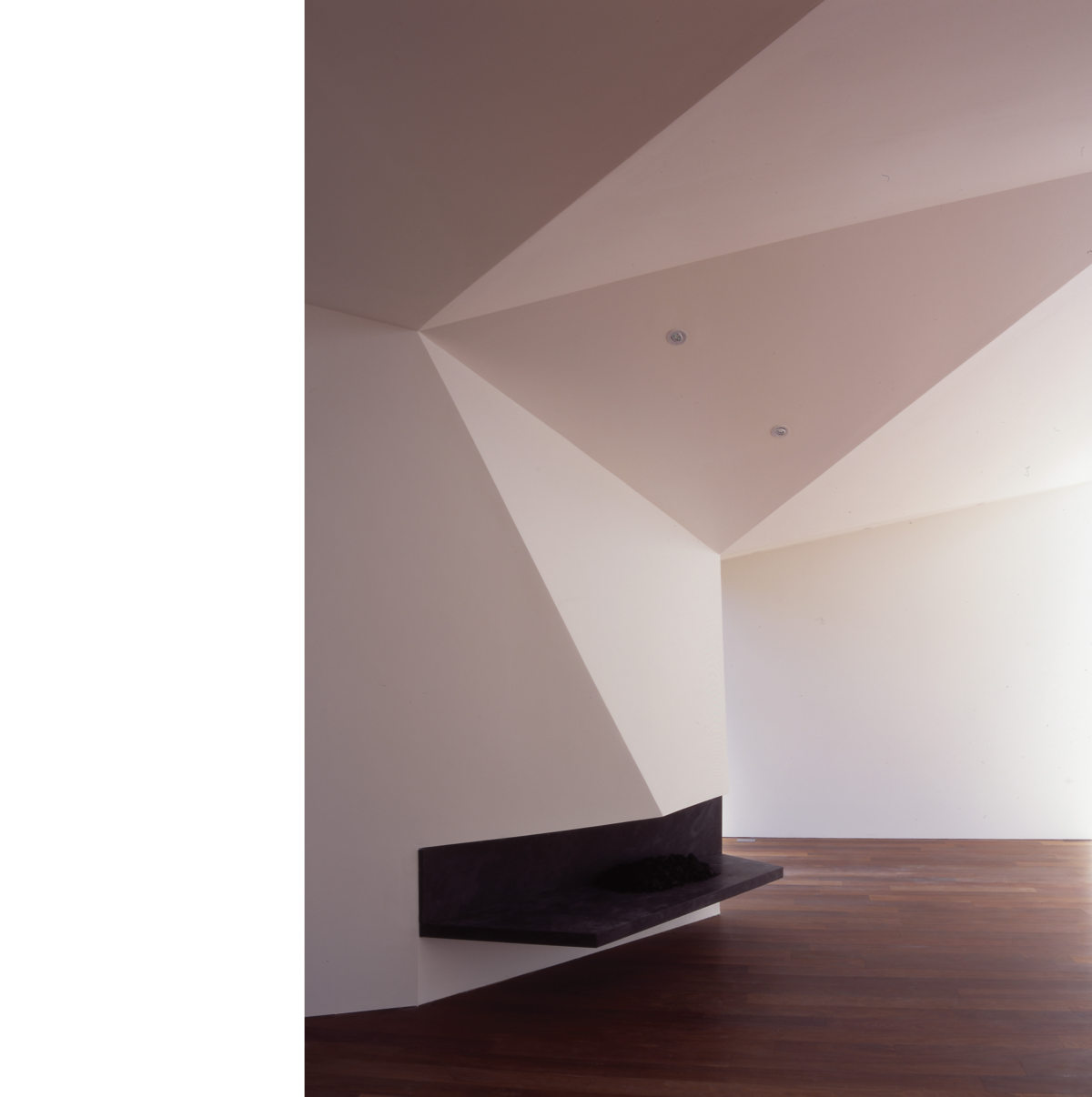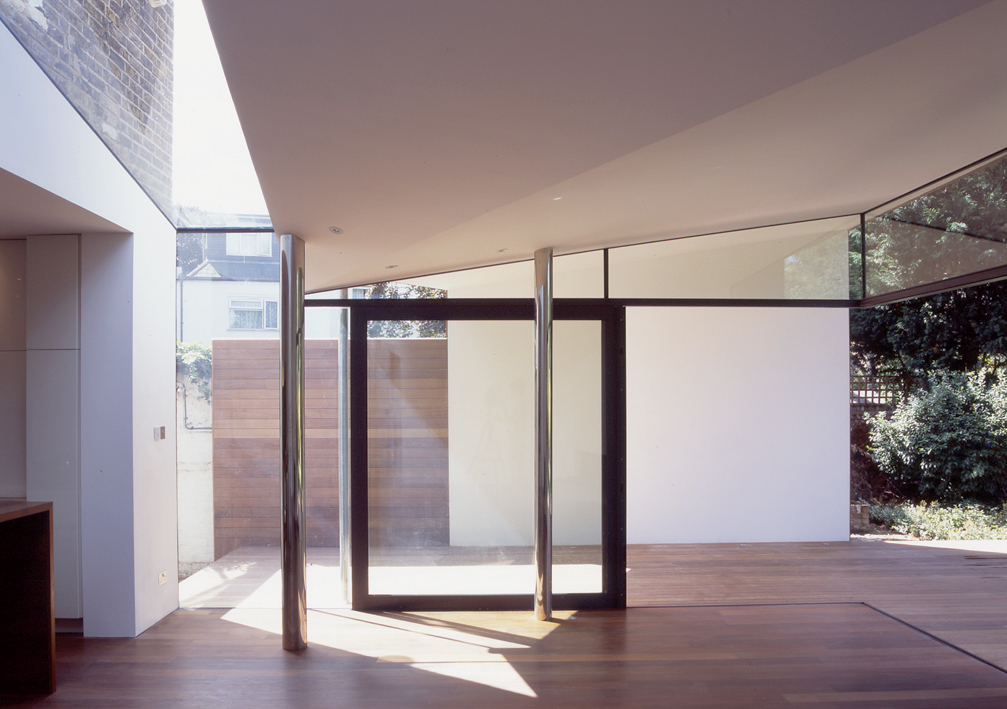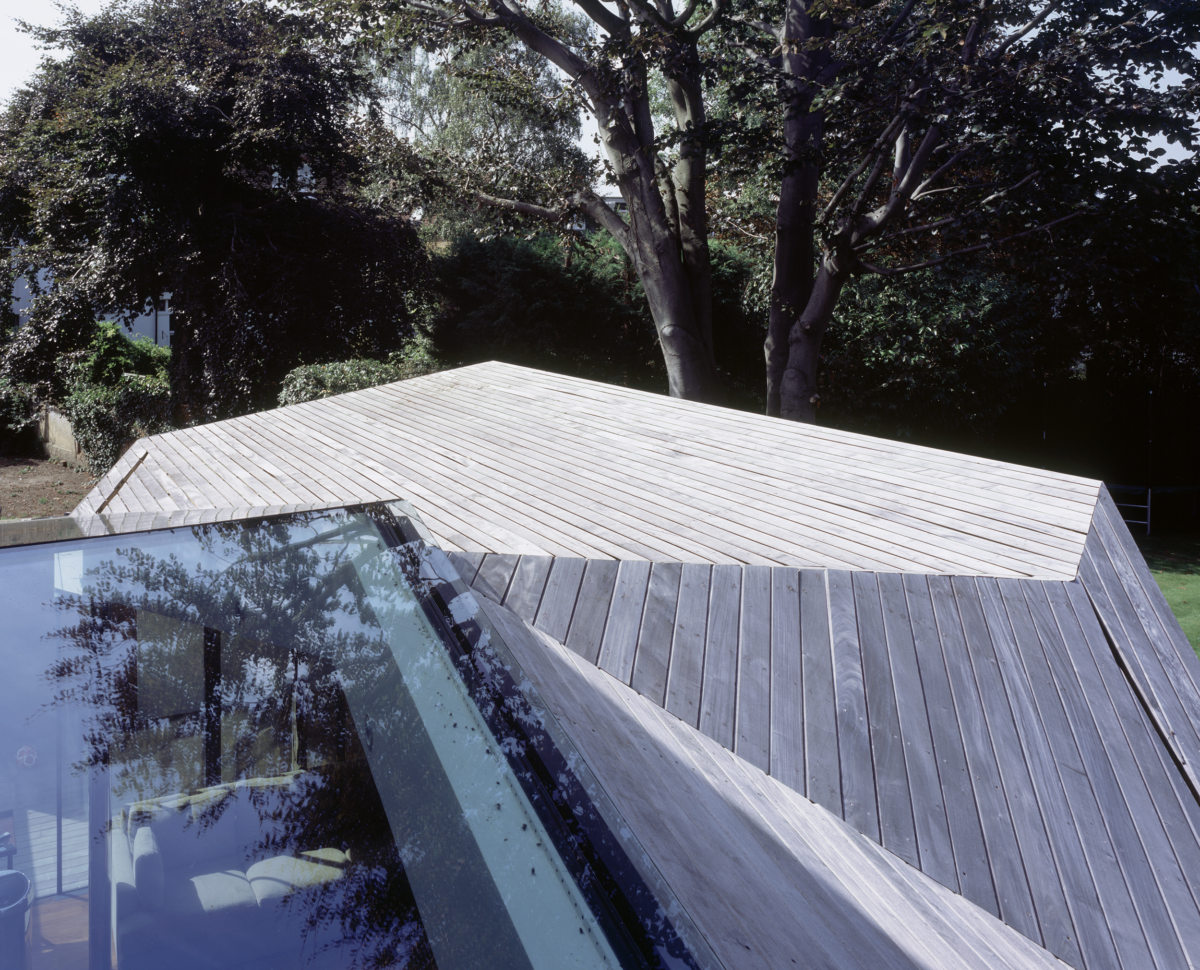Wrap House London
The Wrap House was conceived to push the spatial, geometric and tectonic boundaries of the most humble of architectural commissions – the domestic rear extension. Despite being located in a Conservation Area, this extension is dynamic, sculptural, and energetic. It is formally complex yet creates calm spaces with a refined palette of materials, scrupulously detailed and crafted.
The client’s brief was relatively simple: to extend the existing single family house with an open-plan living and dining area, with access to the garden. Additionally, they were keen that the views of the extension from both the first floor and the garden were as interesting as the interior spaces.
In response to this brief, the new volume was conceived as a continuous plane of timber, that folds across the full width of the plot to create an illusion of a much larger space than that permitted by existing planning covenants. Subtle inflections of the roof plane respond to the variety of roof pitches of neighbouring Edwardian properties, take advantage of views of the garden, and imply subdivision of the internal space. The extension is experienced as a free-standing ‘pavilion’, to allow natural light to penetrate the existing house, and lifted clear of the ground to float above the lawn. By treating the roof, floor, and walls as a continuous wrapping surface the architecture conveys weightlessness, with moments of compression transitioning to dramatic lift.
The timber envelope unifies and resolves the project’s formal, spatial and structural requirements as a series of 3-dimensional folds. At its northern end the surface compresses to create an intimate dining space with a low ceiling. A fixed window that offers a ‘close-up’ view of the garden. At its midpoint the roof folds downward to form a triangulated fireplace and focus for the space. Towards the south and west, the geometry folds upward and outward to provide a more expansive living space with panoramic views of the garden and monumental copper beech tree. The roof surface extends past the glazing to form a covered outdoor terrace, wrapping downward to become timber decking that extends the living space into the garden and around the tree.
The ambition to blur the boundaries between house and garden is perhaps something of an architectural cliché, but in this project, dematerialization is reinforced by placing polished steel elements either side of the glazing like a grove of slender tree trunks, using mirrors to mystify the eye, and allowing both ceiling and floors to run from inside to out. Weightlessness is enhanced with the uninterrupted glass rooflight that separates the extension from the existing house. In summer, with sliding doors open, a truly useful ‘indoor outdoor’ living space is created.
The building sits on an elevated concrete slab supported on twenty-four 100mm diameter mini piles. Mini-piles precluded the need for any excavation or underpinning, eliminated site spill and provided a dry working platform within a week of commencing groundworks. The primary roof superstructure comprises a 10m long single span beam, raked in plan and elevation. Its only visible means of support are two delicate columns clad in mirror polished stainless steel. The frame is braced by a skin of structural plywood and infilled with studwork and roof joists to form space for super-insulation in the roof and walls. The shallow pitches of the roof were achieved with a fibreglass finish on plywood, similar to a boat’s hull, which was overlaid with an Ipe rainscreen. Ipe is a Brazilian hardwood sourced from sustainable forests, which will slowly weather to silver grey.
The craftsmanship of the main contractor, who trained as a joiner and is an experienced boat builder, gives the project an exquisite quality of finish. The rigorously accurate triangular roof planes and perfect converging lines of the internal surfaces were achieved with a combination of strings, lasers, and care for the design shared equally by the contractor, client, and design team.
